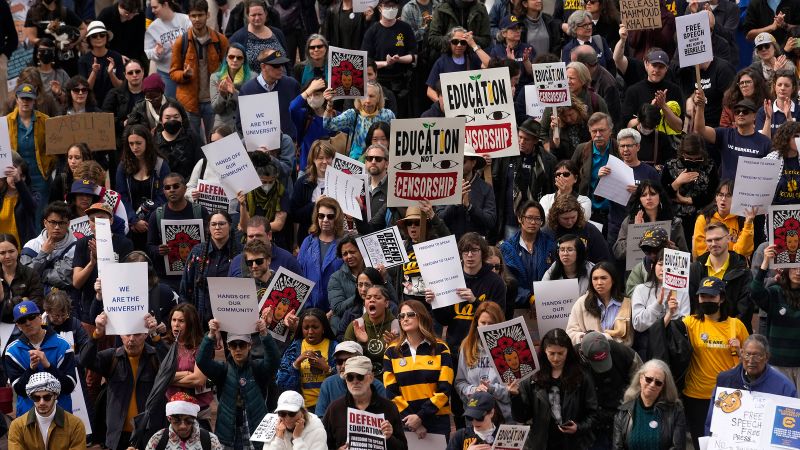The Economic Impact of Trump's Higher Education Policies: A Comprehensive Analysis
Donald Trump's presidency saw significant shifts in higher education policy, impacting various economic sectors and student populations. While the long-term effects are still unfolding, analyzing the key policy changes and their immediate consequences provides crucial insight into their overall economic impact.
Key Policy Changes and Their Economic Ramifications
Trump's administration focused on several key areas within higher education, each with distinct economic implications:
1. Deregulation and Reduced Federal Oversight:
The administration sought to reduce federal regulations on colleges and universities, arguing this would promote efficiency and competition. This approach, however, sparked concerns about accountability and the potential for increased tuition costs due to reduced oversight of financial aid programs and institutional practices. The economic consequence remains debated, with proponents arguing for increased innovation and opponents highlighting the risk of decreased quality and affordability.
Economic Impact: Potentially increased competition but also the risk of decreased quality control and higher tuition if accountability mechanisms were weakened.
2. Emphasis on Vocational Training and Workforce Development:
Trump's administration prioritized vocational training and skills-based education, aiming to better align higher education with the needs of the workforce. This involved increased funding for apprenticeships and career and technical education (CTE) programs.
Economic Impact: Positive impact on specific sectors needing skilled labor. However, the long-term effect on overall economic growth and its impact on higher education's role in research and development remains to be fully assessed.
3. Changes to Federal Student Loan Programs:
While no major overhaul occurred, the administration did implement some changes to federal student loan programs, including exploring income-driven repayment (IDR) plan reforms. These reforms aimed to streamline repayment options, but also sparked debate on their impact on student debt and the overall cost of higher education.
Economic Impact: Potentially positive impact on student debt management for some borrowers, depending on the specifics of any implemented reforms. However, potential negative impact on the overall availability of federal student aid could have hindered access to higher education for low-income students, ultimately hurting long-term economic growth.
4. Impact on Research Funding:
Federal funding for scientific research and development plays a vital role in the US economy. While Trump’s administration did not drastically cut research funding, concerns existed regarding the potential for shifts in funding priorities toward more applied research at the expense of fundamental research, which has long-term implications for innovation.
Economic Impact: Uncertainty regarding the potential long-term impact on innovation and economic growth stemming from changes in research priorities.
Analyzing the Economic Effects: A Multifaceted Perspective
Assessing the full economic impact of Trump's higher education policies requires considering several interconnected factors:
- Increased Tuition Costs: The reduction in federal oversight could have inadvertently contributed to rising tuition, impacting students' ability to afford higher education and hindering upward mobility.
- Labor Market Outcomes: The success of policies promoting vocational training depends on the alignment of skills developed with actual labor market demands. Mismatches could lead to unemployment or underemployment, negating the positive economic effects.
- Long-term Economic Growth: The impact on research and development, access to higher education, and the overall skill level of the workforce will significantly influence long-term economic growth.
Conclusion: Uncertainties and Future Considerations
The economic consequences of Trump's higher education policies remain complex and multifaceted. While certain initiatives, such as the emphasis on vocational training, held the potential for positive impacts on specific sectors, other policy changes raised concerns regarding affordability, quality, and long-term economic growth. Future research and analysis are necessary to fully understand the lasting impact of these policies on the US economy and the higher education landscape. Understanding these impacts is crucial for policymakers aiming to craft future strategies that promote both affordability and effectiveness in higher education.
